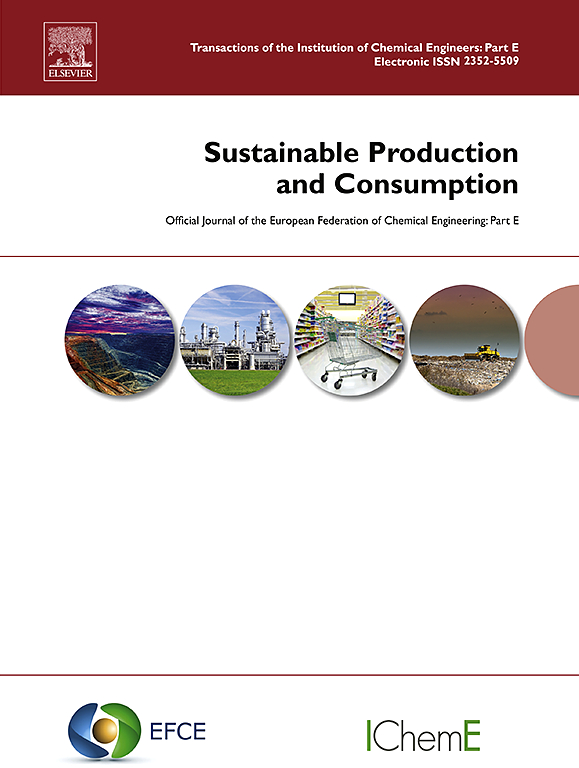Reducing environmental pressure through a more circular consumption of clothes
IF 9.6
1区 环境科学与生态学
Q1 ENVIRONMENTAL STUDIES
引用次数: 0
Abstract
Clothing production and consumption contribute to various environmental problems, such as climate change and environmental pollution. With the expected growth in demand, these negative effects will only increase. Consumers making sustainable choices in the acquisition, use and disposal of garments can play a critical role in the reduction of such environmental pressures. This study, taking a circular economy perspective, assesses to what extent the adoption of circular consumer behaviour in the Netherlands could reduce environmental pressures related to clothing and which behavioural changes are most effective in doing so.
In our analysis we incorporated 14 types of behaviours, all based on a framework for consumer options related to the circular economy. To provide a realistic estimation of the environmental reduction potential of these behaviours, we not only calculated the theoretical environmental reduction potential of each behaviour but also considered behavioural plasticity (i.e., the share of consumers that do not yet engage in a behaviour but would be willing to do so) and interactions between behaviours. The theoretical reduction potential was calculated with a combination of input-output- and process analysis, and the behavioural plasticity was based on survey data of a study among Dutch consumers.
Our results show that a more circular consumption of clothing in the Netherlands could reduce approximately 11–19 % of greenhouse gas emissions and approximately 3–29 % of land use related to clothing. Buying fewer new clothes, and choosing more durable garments, garments made from more environmentally-friendly and from recycled materials are behaviours that have the highest reduction potential when behavioural plasticity is considered. Renting clothes, buying second-hand, repairing, and changes in washing and drying behaviour have a lower reduction potential.
通过更循环的服装消费来减少环境压力
服装的生产和消费导致了各种环境问题,如气候变化和环境污染。随着需求的预期增长,这些负面影响只会增加。消费者在购买、使用和处置服装方面做出可持续的选择,可以在减少这种环境压力方面发挥关键作用。本研究从循环经济的角度,评估了荷兰采用循环消费行为在多大程度上可以减少与服装有关的环境压力,以及哪些行为改变在这方面最有效。在我们的分析中,我们纳入了14种类型的行为,所有这些行为都基于与循环经济相关的消费者选择框架。为了提供对这些行为的环境减少潜力的现实估计,我们不仅计算了每种行为的理论环境减少潜力,还考虑了行为可塑性(即尚未参与但愿意这样做的消费者份额)和行为之间的相互作用。理论减少潜力是通过投入产出和过程分析的结合来计算的,行为可塑性是基于荷兰消费者研究的调查数据。我们的研究结果表明,在荷兰,更加循环的服装消费可以减少约11 - 19%的温室气体排放,并减少约3 - 29%与服装相关的土地使用。少买新衣服,选择更耐用的衣服,更环保的衣服和回收材料制成的衣服,当考虑到行为可塑性时,这些行为具有最大的减少潜力。租用衣服、购买二手衣服、修理衣服以及改变洗涤和烘干行为的可能性较低。
本文章由计算机程序翻译,如有差异,请以英文原文为准。
求助全文
约1分钟内获得全文
求助全文
来源期刊

Sustainable Production and Consumption
Environmental Science-Environmental Engineering
CiteScore
17.40
自引率
7.40%
发文量
389
审稿时长
13 days
期刊介绍:
Sustainable production and consumption refers to the production and utilization of goods and services in a way that benefits society, is economically viable, and has minimal environmental impact throughout its entire lifespan. Our journal is dedicated to publishing top-notch interdisciplinary research and practical studies in this emerging field. We take a distinctive approach by examining the interplay between technology, consumption patterns, and policy to identify sustainable solutions for both production and consumption systems.
 求助内容:
求助内容: 应助结果提醒方式:
应助结果提醒方式:


